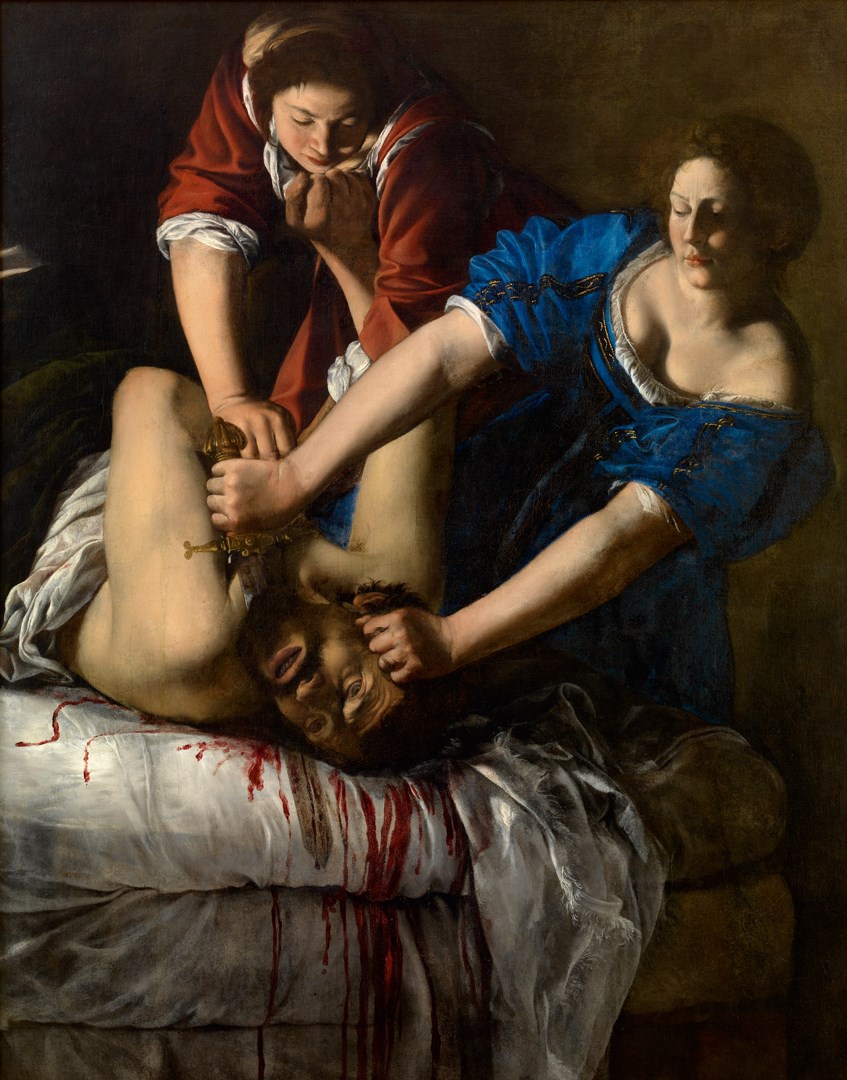Artemisia Gentileschi – A Painter to Know
On October 3 the National Gallery in London opened an exhibition devoted to the Italian painter Artemisia Gentileschi (1593-1653). The exhibition runs until January 24, 2021. The title image for my blog is “Judith Slaying Holofernes” from the exhibition. No copyright infringement is intended.
If you can’t make it to London to see the exhibition, I have an idea for you. Read my romance And Heaven Too. The central plot revolves around this very painting. Warner Books published it in 1990. Thus I can say, “Hey, National Gallery, I’m way ahead of you.”
Gentileschi did more than one painting of this Biblical moment. I chose the one where Judith is wearing a blue dress. I fell in love with the painting, just as the hero of my story does.
The original Warner Books cover took the usual romance cover route. I don’t have anything against it.

However, I made sure my digitized version features Judith in her blue dress. And Holofernes’ head. Yikes.

Artemisia Gentileschi: An Old Mistress
Writing inspiration can come from anywhere. But rarely do I find inspiration for one of my romances in an academic talk. (I find other kinds of interest and pleasure in academic talks.)
Then, one day, I attended a lecture at Duke University entitled “Old Mistresses.” The title points to the idea of “Old Masters,” those artists of skill who worked in Europe before 1800.
“Old Mistresses” presented image after image of paintings done by women during the same times and places as the Old Masters. My eyes opened literally and figuratively. I could hardly believe what I was seeing. I recall having some naive thought of the sort, “These are, like, real paintings. As good as any man’s.” I simply had had no idea that women had produced work of such quality.
And Heaven Too
From that presentation I chose the artist and the piece of art that I liked most. Namely, Artemisia Gentileschi and her Judith. And then I invented a story around it.
First, And Heaven Too takes place in 1639.
Second, the hero, Charles Lambert, is a disgraced English nobleman who has made his career as an art dealer in Florence. He buys Gentileschi’s Judith at an art auction. But the next day, when he goes to complete the transaction, he learns that someone else has subsequently bought the painting. Since this post-sale sale is highly unusual, he sets out to discover the new owner. And to recover what he thinks is rightfully his.
The chase in on.
Third, Lambert follows the path of painting to England. There he meets a flesh-and-blood Judith who is the niece of a very powerful man … who is also mightily interested in the painting.
Fourth, I chose the date 1639 so that I could play with certain historical circumstances. Charles I is king. He is from the House of Stuart in Scotland. His wife is a Roman Catholic, and he is playing footsie with the Vatican who wants to bring England back into the Catholic fold. (To remind you, Henry VIII created the Church of England, aka the Anglican Church, in 1534.) The Puritans are on the rise and want nothing to do with Anglicans, much less Catholics. And the Puritans really do not like all the licentiousness associated with the English theater. (Another reminder: Shakespeare died in 1616.)
These dynamics will come to a head in 1642 with the closing of the theaters and Civil War. Charles will lose his head in 1649,
And Heaven Too takes place entirely during the summer of 1639. So the dire events of the future are only roiling in my story.
Artemisia Gentileschi: Worth a Look or a Read
In whatever form you experience this extraordinary painter, I hope you enjoy her work!
For more information about the exhibit see Artemisia at the National Gallery
See also: What Romance Novels Have Taught Me About Love
For advice on writing a romance novel of your own, visit my complete guide for writing a book.
Categorised in: Blog, Writing, Writing Inspiration, Writing Romance
This post was written by Julie Tetel Andresen
You may also like these stories:
- google+
- comment


